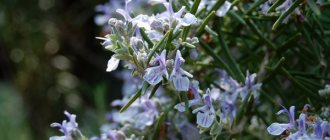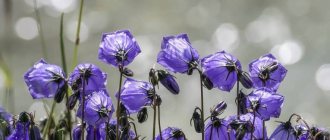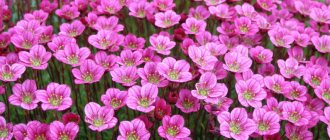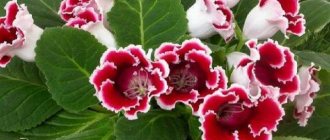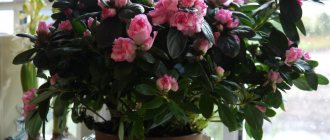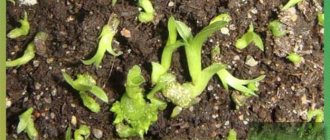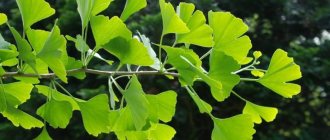Common problems and pests
Plumeria juice is poisonous, so insects practically do not touch it.
The only exception is the spider mite. The main symptom is the appearance of a thin cobweb on the leaves and shoots. To combat spider mites, acaricides and insectoacaricides are used. The drug "Actellik" has proven itself well. From available means, you can use medical alcohol and a solution of laundry soap. Repeated processing. With frequent and abundant watering, combined with low temperature and lack of drainage, the stems and root system rot. Diseased plants are transplanted into new soil, and the affected areas are cut off. Watering is temporarily reduced to a minimum. If there is a lack of moisture in the air, the leaves dry out, fall off, and the plant begins to grow slowly. Regular spraying is recommended.
Plumeria is an interesting plant. Easy care combined with very beautiful flowering. Rarely used in compositions. It is most often grown as an independent pot plant or bonsai-style tree.
Pests and their control
Plumeria is poisonous, which allows it to be protected from pests and diseases. We can say that the tree has only one enemy - the spider mite.
The worst enemy of plumeria is the spider mite.
This attack in the early stages is identified as thin threads on the leaves and small dots at the bottom of the plate. If the disease is advanced, the entire plant is literally covered with cobwebs and mites. The spectacle is not for the faint of heart. The fight against ticks largely depends on the stage of its development.
Caring for an adult plant
Lighting. It should be as complete as possible. Heat-loving plumeria is calm about the rays that fall directly on the leaves of the plant. Watering. In summer, the flower needs to be watered generously so that the soil in the pot does not dry out (perhaps even daily). In winter, plumeria is rarely watered, and the colder the room, the less water needs to be poured into the soil. Water procedures. Plumeria does not require spraying, especially the flowering one - its petals are delicate, so when watering, do not get water on them. But wiping the leaves off dust with a damp cloth is not only possible, but also necessary. Nutrition. Plumeria is fed with a complex mineral composition for home flowers. It is applied twice a month. Diluted as recommended by the manufacturer. Feeding period: from April to August. However, this culture also responds well to the addition of organic matter. If you wish, you can give plumeria mineral water once a month, and organic food once a month. Winter peace. Don't be alarmed if the plant begins to shed its leaves - it is preparing for a period of rest. Move the pot to a room with 16-18 degrees. There you don’t have to water the flower, except maybe spray the soil with a spray bottle three times a month. Such winter rest is not necessary (you don’t have to move the pot into the cold, leaving it warm and adding additional light until spring), but without such rest the plumeria will bloom worse. Crown formation, pruning. Plumeria does not like to branch, even if it is regularly pruned - this plant likes to grow back in one shoot. But you can still “beg” a flowerpot to become a bush. Cut off the top, treat the cut with cytokinin paste, and several shoots will grow from it (but strictly adhere to the dosage - applying too much will only suppress the plant). And root the top using cuttings
Important! The plant has a poisonous milky sap, wear gloves! Diseases. The appearance of black spots on leaves is a rare disease called fungus
It occurs from excess moisture. Carry out 2-3 treatments with “Fitosporin” or “Fundazol” (spraying the crown + spilling the substrate). Pests. Only a spider mite might be interested in a poisonous flowerpot. Insecticides (Aktellik, Fitoverm and the like) can drive it away.
This video will tell you more about caring for this ornamental crop:
Plumeria bloom
Plumeria planted from seeds will bloom in your home after 3-5 years. By this time it should grow by about a meter.
The flowers last a long time. Their decoration is not only bright, amazing petals, but also a wonderful aroma.
Flowers are cross-pollinated, but they can also self-pollinate. The fruits, as I said above, ripen up to 9-10 months. They need to be stored in a cool place.
An alternative method of flower propagation: cuttings
Unlike seed propagation, cuttings completely preserve the varietal characteristics of the plant. That is, by cutting a twig from a plumeria with white flowers, you will get an absolutely identical flowerpot.
First, all the leaves are torn from the cuttings, then they are dried, and then stuck into light soil (peat + sand + perlite).
In this video, you will be told in more detail about this procedure, and will also be shown the successful rooting of a “stick”, from which a full-fledged plumeria will soon grow:
Pruning, replanting and fertilizing
Seasonal pruning is carried out immediately after the flower emerges from winter dormancy. It is essential for maintaining healthy growth and improving flowering period. Plumeria has quite thick, massive branches that can reach 5-6 cm in diameter. Using a sharp and disinfected instrument, shoots that are too long, dried out, or deformed are trimmed.
It is important to remember that frangipani flowers appear only on young branches, so you should be careful with them. Cut and shorten them only when absolutely necessary (for example, when signs of disease appear).
An article about the gorgeous night beauty flower.
Transplantation is also carried out in early or mid-spring, before the onset of the first flowering phase. The container for a new planting should be 2-3 centimeters more spacious. A drainage layer of expanded clay or shell rock is poured onto the bottom; eggshells are also suitable. Layers of soil are poured on top (2 parts of turf and garden soil with the addition of humus, vermiculite and sand).
Roots that are too long or damaged are carefully cut off and shortened with pruning shears or a sharp knife, leaving 4-5 cm of their length. Both pruning and replanting are performed no more than once per season, otherwise the plant may stop blooming. Fertilizers are applied as needed in several stages. In the spring, when new sprouts appear, a small amount of nitrogen-containing complex substances is added in the recommended proportions.
With the onset of the flowering period, special fertilizers are applied for flowering indoor plants, but not more than 1-2 times a month. It can be fed by root or non-root method. In the first case, the substances are diluted strictly according to the instructions. In the second, they take half as much fertilizer for the same amount of water and carefully spray the green part of the flower so that excess moisture does not fall on the fruit. By autumn, fertilizing is reduced by three times, and in winter, especially during the dormant period, they are abandoned completely, limiting themselves only to timely watering.
Growing plumeria from seeds at home
If the decision to grow such a beautiful tree at home is final and cannot be appealed, then you need to start by choosing seeds, which are called lionfish, since they have a membranous wing at one end. Frangipani is both a self-pollinating plant and a cross-pollinating plant. The fruits are pods that take 8–10 months to ripen.
Necessary equipment
To sow plumeria you will need:
- nutritious soil, which you can prepare yourself or buy in a store;
- a container of water or damp cotton wool;
- cups for disembarkation;
- fungicide for seed treatment, for example Fitosporin. It is better not to use the drug Maxim, as it may cause a delay in seed germination;
- bag or glass for covering.
Soil preparation
The soil for plumeria should be light and breathable. It is not recommended to use peat in its pure form; it will only delay seed germination due to increased acidity; moreover, peat dries out quickly, while plumeria loves moderate moisture.
The ideal substrate, of course, is better to prepare yourself. To do this, you need to take 50% of the purchased soil for cacti and succulents, coconut or universal - your choice. The remaining 50% are natural leavening agents: river sand, vermiculite, perlite, foam balls, brick chips, small eggshells, small pieces of charcoal.
Step by step process
To obtain healthy and friendly seedlings, you should follow the recommended agricultural practices:
- Seed soaking stage.
It is necessary to place the lionfish in a container, fill it with water and place it in a very warm place. The temperature should be around +28…+30 °C. The seeds can be placed between two pre-moistened pieces of cotton wool or cotton pads. In both cases, the lionfish will swell within 12 to 24 hours. Plumeria seeds need to be soaked before planting. - Seed selection stage.
After the time indicated above, you need to take out the seeds and carefully examine them. Treat the swollen ones with a fungicide and leave them for planting, discard the rest. Seed selection is carried out to sort viable and dead planting material - Preparing the container for planting.
It is better to use individual cups or small bowls rather than large containers, since plumeria does not like transplants - its root system is very delicate and fragile. It is better to use an individual container for planting for each future plant. - Landing. This is done so that the upper quarter of the seed is not covered with soil, and the wing sticks out perpendicularly upward. Under no circumstances should you break it! After sowing, the containers are closed with a plastic bag or glass and sent to a warm place, for example, on a radiator or heated towel rail. Ventilation of the greenhouse is carried out twice a day for 20 minutes. The soil should be moistened with a spray bottle.
- Shoots. After 7–20 days, sprouts appear. The cover should be removed and the pot should be placed in the brightest place, but without direct sunlight, otherwise the young shoots will get burned. If there is not enough natural light, you need to add artificial light.
Plumeria shoots appear one to three weeks after sowing
- Picking. After the young plants have completely formed the root system, straightened the leaves and formed second leaves, they can be picked. More precisely, to transplant into larger bowls. Plumeria grows well, so it is advisable to immediately take a deep pot of three to four liters so as not to disturb it again throughout the year. You should replant carefully, trying not to damage the roots; it is better if there is a lump of earth present. There is no need to bury the stem. Sprinkle the cotyledon leaves with soil. The substrate is the same as when planting. The main thing is not to forget about drainage from fine expanded clay, brick chips or pieces of foam.
Problems associated with cultivation - table
| Problem | Solution |
| The plant cannot independently shed the seed coat from the leaves, which can lead to rotting of the latter. | Wet the cotton wool and gently apply it to the skin for half an hour. Then, using a toothpick, free the leaves from the scales and film that is located under them. |
| Rotting of the stem and roots. | This is caused by overwatering. Watering must be reduced. |
| Yellowing, falling or wilting of leaves, stoppage in the development of plumeria. | If this is not associated with the winter dormancy period, then it is caused by insufficient moisture. The frequency of watering should be increased. |
Popular articles Planting Lawson cypress variety Elwoodi and caring for it at home
The plumeria cotyledon is easily removed with a damp cotton swab and a toothpick.
Recommendations for growing plumeria indoors
- Lighting.
This plant simply basks in bright, direct sunlight. Such strong lighting for plumeria requires at least 6 hours a day for successful further flowering. If these conditions are not met, then you may not see magnificent frangipani flowers. When the lighting is sufficiently poor and such conditions persist for a long time, the plant begins to shed all its leaf mass and its branches become elongated bare stems with small remains of foliage at the tops. Therefore, it is best for plumeria to be placed on windows with southern exposure or to provide additional illumination for the plant with special phytolamps. As a last resort, windows into which the sun's rays will enter at sunset and sunrise may be suitable. With the arrival of summer temperatures, the plant can be taken out into the open air, but it is still necessary to accustom it to sunlight gradually. It is also not recommended to expose plumeria to sunlight immediately after purchase. The plant needs to find a place in the air that is protected from precipitation and the influence of drafts. - Air humidity.
Since it is a resident of humid and warm climatic regions, frangipani really likes high humidity and spraying. Although there is evidence that the plant is calm about the lack of moisture. It is best to spray leaf blades and stems during the period of active plant growth. To do this, take softened water at room temperature. - Temperature indicators of plumeria content.
The plant is completely tolerant of indoor thermometer readings. However, for summer, it is better to maintain temperature limits of 25–30 degrees, and with the arrival of the cold season, the temperature can be reduced to 16–18 (this occurs during the plant’s dormant period). But it must be remembered that temperatures below 16 degrees will have a bad effect on frangipani. - Winter rest period.
The plant needs dormancy, which occurs during the winter months. The duration of this period can vary from 21 to 30 days (depending on the type of frangipani). Some of the leaf mass falls off at this time, but these are very old leaves, which most often grow from below. After the plant wakes up, a period of active growing season begins with the appearance of young leaves, and most importantly, flowers. Buds are formed only on young shoots, so pruning plumeria is necessary only at the end of flowering. During dormancy, the plant needs to achieve consistency between temperature and light. If the temperature is reduced to 12–14 degrees, then watering the plant is stopped and the soil is moistened only once every 1.5–2 months. In this case, the plant is pruned and left until spring, waiting for the buds to appear. If during wintering the temperature was not reduced and could reach 25–27 degrees, then plumeria continues to grow. Then its leaf plates, due to lack of light and at a high rate, become smaller in size, their number decreases. To avoid such consequences, frangipani must be illuminated with lamps for at least 8 hours a day. If the heat indicators are 18–22 degrees, then the plant will not need additional lighting, but will have to reduce the amount of soil moisture. Also, watering in winter depends on how much foliage remains on the plant. If it is not possible to create sufficient illumination, then it is necessary to cut off all the foliage. - Watering plumeria.
Since the plant develops very quickly and is large in size, large volumes of water are needed to moisten the soil. In the summer, some gardeners water frangipani once a day, but sometimes even twice. It all depends on how dry the soil is, because the plant will also suffer from too much waterlogging. Watering occurs with settled water, but there is information that tap water does not negatively affect the plant at all. During the wintering period, watering is reduced so much that the earthen ball in the pot does not dry out completely. - Fertilizers for frangipani.
The choice of fertilizers for this plant is a very important step, since not only the appearance of the plumeria, but also the further flowering process depends on them. It is best to apply fertilizers with a complex of minerals at a time when rapid growth of young leaves begins. Nitrogen compounds for fertilizing must be treated with great caution, as they greatly inhibit the formation and development of flowers. When it is clear that the young plates have already begun to gain strength, then you can switch to feeding for flowering indoor plants, since it contains a sufficient amount of phosphorus, which will promote the ripening of flower buds and the opening of flowers. It is recommended to fertilize plumeria once every two weeks. If frangipani grows outdoors, then it is necessary to carry out foliar feeding - spraying the plant with the same fertilizers (foliar feeding). To do this, half the dose of the fertilizer solution is diluted in water. There is a need to alternate spraying and fertilizing the soil. The regularity of this operation is the same. - Soil selection and composition, replanting tips.
To plant plumeria, the soil must be loose and well-permeable to air and water. The soil should not become compacted over time. You can use universal soil for indoor plants and mix in a baking powder (perlite or vermiculite), fine expanded clay or well-crushed conifer bark. The substrate must have an acidity of pH 6.1–7.5 (depending again on the type of frangipani). To prepare the soil mixture, the following variations are used: - turf soil, peat soil, humus, river sand (ratios 2:1:1:1, respectively);
- turf, leaf soil or peat soil, coarse sand, bark of coniferous trees or any baking powder (proportions are maintained at 2:1:1:1). Early spring is chosen for replanting plumeria. If the plant is young, then the pot and soil are changed annually, but if the frangipani has reached the age of 3–5 years, this operation is performed every 2–3 years. Since the size of the root system corresponds to the size of the plant itself, and if the roots are provided with larger and larger pots, the plant can develop very strongly indoors. To prevent this from happening, it is necessary to reduce the size of the root system during replanting by trimming the sides to 5 cm. And then you don’t have to change the pot, but only add a new substrate. But if it is not necessary to restrain the growth of plumeria, then you can increase the size of the pot. Good drainage must be placed at the bottom, and there must be holes in it to drain excess moisture.
Sources
- https://pestik-tychinka.ru/plyumeriya-foto/
- https://MrDachnik.com/plyumeriya
- https://floristics.info/ru/p-rus/plyumeriya.html
- https://agronomu.com/bok/2731-tonkosti-uhoda-za-plyumeriey-v-domashnih-usloviyah.html
- https://fruittree.ru/sorta/dekorativnye/plyumeriya-uxod-doma.html
- https://sad-doma.net/houseplants/dekarativnotsvetushhie/plyumeriya-uhod.html
- https://tutknow.ru/garden_and_orchard/5061-plyumeriya-franzhipani-vyraschivanie-v-domashnih-usloviyah.html
[collapse]
Preparing seeds before planting
Frangipani seeds are large, winged (like maples). For planting, you should select fully ripened seeds in which the root buds are visible. Before planting, the planting material must be soaked. There are several soaking options.
Option #1:
- immerse the seeds for 15 minutes in a solution of potassium humate, Epkin, HB-101 or another root growth stimulator;
- spread on damp gauze/napkin and cover with damp gauze/napkin on top;
- place in a transparent container (it’s good if the sun hits it and heats it up). During the cold season, you can place it next to the battery. Leave for a day, periodically wetting the gauze from a spray bottle.
After 24 hours, you can start planting, but you can wait a few days until the white roots hatch.
Option #2:
- soak plumeria seeds in warm water (3-4 hours);
- dip them three times for 2-3 seconds in a solution of hydrogen peroxide and dry;
- insert the seeds into the holes of the cotton pad with the wings facing up;
- Pour warm water into a flat container and place the disk with the seeds with the lionfish facing up;
- The roots will hatch in 6-7 days.
Caring for a young plant
With proper care, plumeria grown from seeds will bloom in 3–5 years (in spring or summer).
Watering and lighting
Plumeria loves light very much. Therefore, it is best to place it on window sills facing south or southwest. For flowering, the plant must be illuminated in spring with bright, diffused sunlight for at least 6 hours a day. And this is the main problem of growing plumeria in apartments. When there is a lack of light, the plant sheds its leaves, and there is no need to even talk about the appearance of flowers under these conditions.
The flower should be watered abundantly, especially on hot days. Between two waterings, allow the soil to dry about 3 cm from the top. We must remember that it is better to underfill than to overfill. Overwatering threatens the development of root rot.
To provide the air humidity the flower needs (and it should be about 60%), it is necessary to spray the leaves with settled or rainwater from time to time. How many times a day depends on the weather. But if plumeria is blooming at this time, moisture should not be allowed to get on the flowers.
Plumeria loves light, moist air and moderately moist soil without stagnation of water at the roots
Rest period
With the onset of winter, plumeria sheds its leaves almost completely. The plant enters a dormant period. It lasts from 3 to 6 weeks. At this time, it would be good to reduce the room temperature to 16 degrees. Air humidity and lighting do not play a significant role when keeping the flower cool.
Unfortunately, it is not always possible to move plumeria into an unheated room in an apartment. At a high room temperature (26 degrees), plumeria will continue to grow and will not go into “dormant mode.” In this case, you need to continue normal watering, spray the leaves or install a humidifier in the room, and also turn on artificial lighting for the flower for 8 hours a day.
If the temperature in the room is about 20 degrees, additional light is not needed, but watering should be reduced by about half
At the same time, it is important to ensure that the soil does not turn into a dry lump.
During the dormant period, plumeria completely or partially sheds its leaves.
Pruning and shaping the bush
Like any cultivated tree, plumeria requires pruning. It is carried out annually when the rest period ends. In the first years of life, only weak, damaged or too elongated branches of plumeria should be trimmed (how many centimeters is at the discretion of the grower). Plumeria will still not bush after pruning. The peculiarity of this plant is that at the cut site it produces only one replacement shoot. The branching process begins after flowering - 2-3 new branches appear in place of the inflorescence.
Fertilizer application
Young plumeria should be fertilized for the first time 2-3 weeks after planting in a separate pot, and then fed every 2 weeks from April to August. In the spring, when the leaves are growing, plumeria needs nitrogen, phosphorus and potassium fertilizers (containing substances in equal proportions), such as Indoor plant fertiliser, Pokon, Rainbow. During flowering time (May - June), apply phosphorus fertilizers, for example, Superbloom ++ or Ideal.
With proper care, plumeria will delight its owners with beautiful flowers.
Timing and optimal conditions for planting
Plumeria is propagated in 2 ways:
- vegetative;
- seed.
The first one is simpler .
When planting seeds, you will have to put in more effort. In addition, plumeria planted in this way will bloom later. Did you know? The second name for plumeria is frangipani. The flower was named after the nobleman from Italy who first used its aroma to create perfume.
For a tropical plant, a daily 6-7 hour stay in direct sunlight is important. Therefore, when choosing a location, preference should be given to those windows in the house that can provide this condition. This may be the south or southwest side. Northern window openings are not suitable for growing plumeria - in such conditions it will refuse to bloom.
Planting seeds should be planned for early spring. In the room where seedlings and sprouts will be kept, a warm temperature should be maintained at +23...+25°C. A stronger plant should be provided with warmer conditions - +25...+30°C. With the onset of autumn, the temperature will need to be gradually reduced. In winter, during the dormant period, plumeria should be grown in conditions of +16...+17°C.
Another important condition for planting and further cultivation is high air humidity. The pot with plumeria is kept on a tray with wet expanded clay, pebbles or sand. Also, the optimal level of humidity is achieved by using a humidifier and frequent spraying from a spray bottle.
Caring for plumeria seedlings
During the greenhouse period, do not forget to regularly ventilate the crops - plumeria does not like high humidity. It also has a negative attitude towards excess moisture in the soil. Therefore, spray the substrate as needed, without flooding, otherwise it will turn sour.
When the lionfish seedlings grow to 6-7 cm and form 2-3 true leaves, plant them in larger containers. It’s not worth taking too large dishes yet - a pot with a diameter of up to 10 cm will be enough. You can gradually increase the diameter of the pot by 2-3 cm, replanting the plumeria every spring.
Do not use clay pots. The roots of the plant love to be attached to the walls. It will be impossible to replant the bush without damaging the roots.
When growing plumeria from seeds, you may encounter one problem. The lionfish do not always fully open; sometimes they remain on the tops of the seedlings. Do not leave seedlings in the lurch, because the plants themselves cannot always cope with this. A tightly seated lionfish prevents the seedling from growing and can even completely stop its development
Remove the lionfish yourself, but carefully. First, wrap it in wet cotton wool and let it soften.
Then pick it up with a pencil or toothpick and release the plant.
In the future, caring for plumeria from seeds will consist of organizing the correct watering regime and maintenance conditions. So that your pet can bloom in 3-4 years, keep it cool in winter and water it occasionally. In the spring and summer, it needs regular watering and fertilizing with mineral complexes every 2 months.
With this mode, you will grow a beautiful meter-tall tree and will delight you with a lush basket of bright inflorescences. So don’t let the exotic appearance of the seeds and the overseas nature of plumeria scare you. Plant plumeria from seeds at home and enjoy the results of your labors!
Reproduction methods
Growing from seeds
Quite often, plumeria is grown at home from seeds. Prepare individual cups, in each of which you need to plant one seed, and place them with their wings up. Cover the tops of the crops with glass or film and transfer them to a warm place.
When 2 true leaf plates appear on the seedling, the shelter will need to be removed. When there are a few days left before planting the seedlings in permanent pots, it will be necessary to fertilize them with nitrogen fertilizer. Transplantation is carried out carefully, try to ensure that the earthen lump remains intact.
